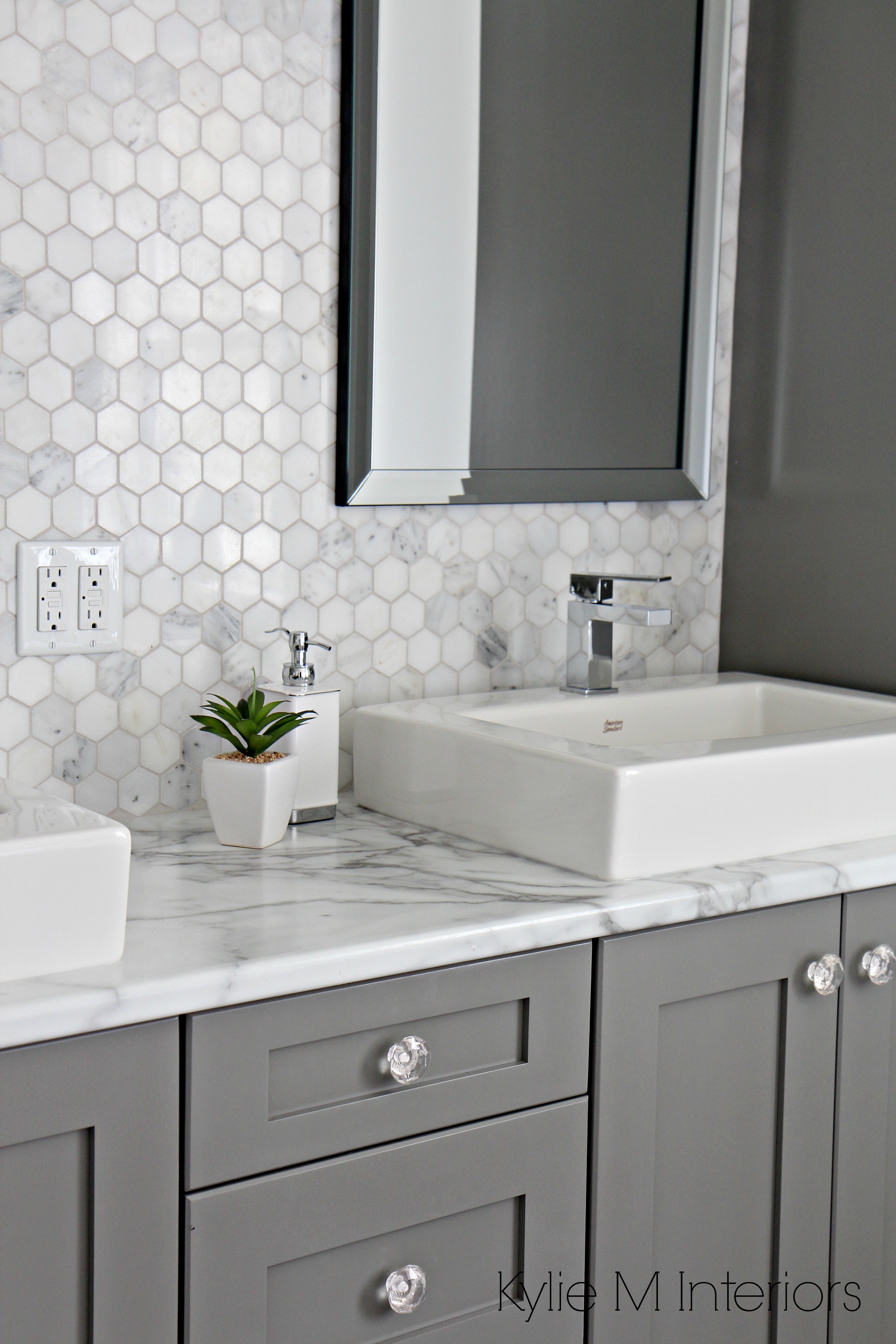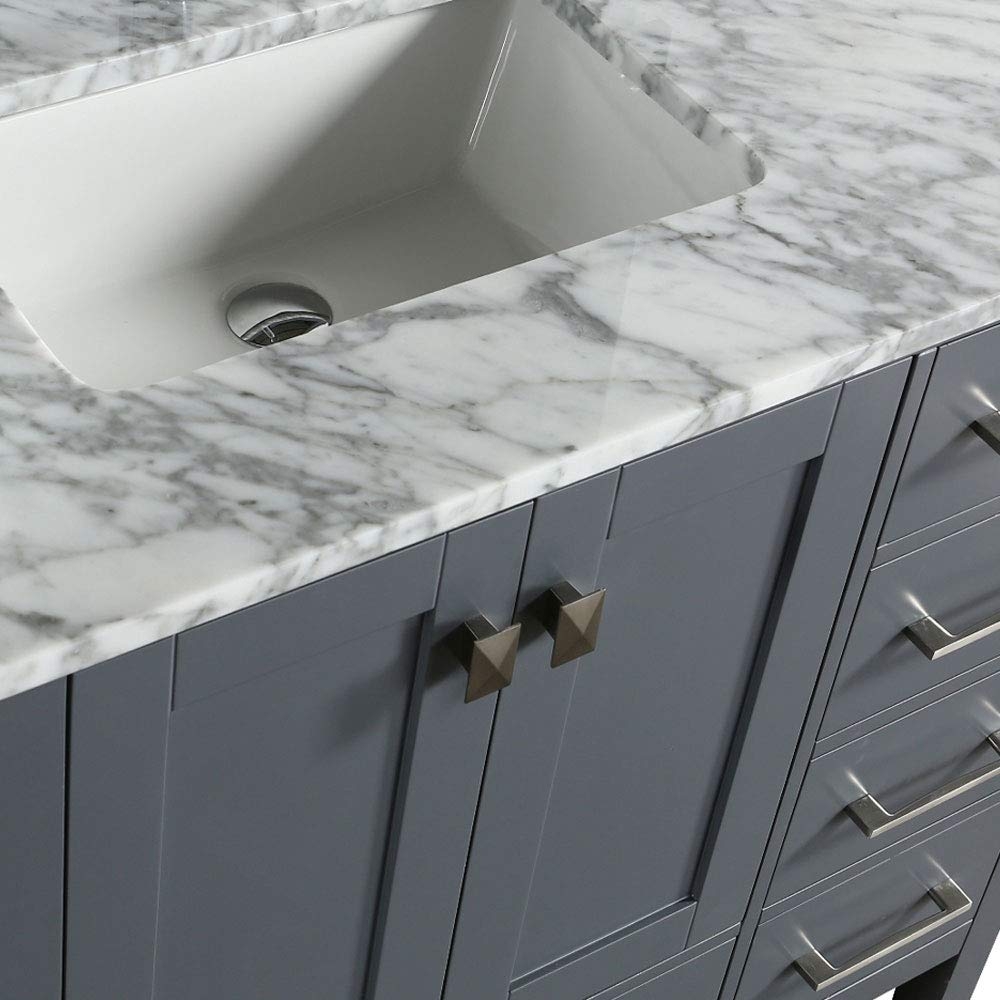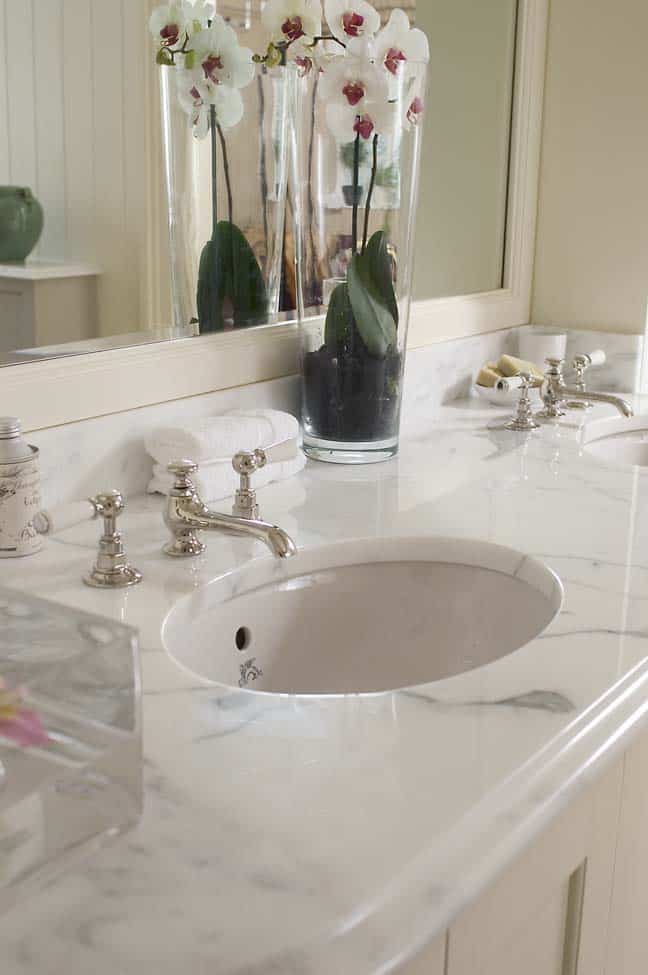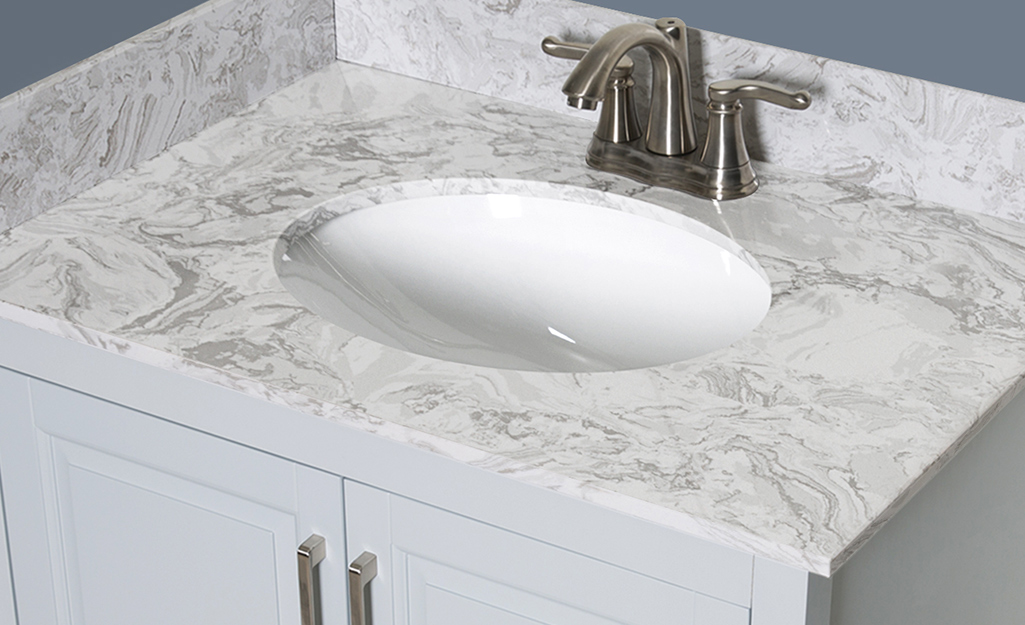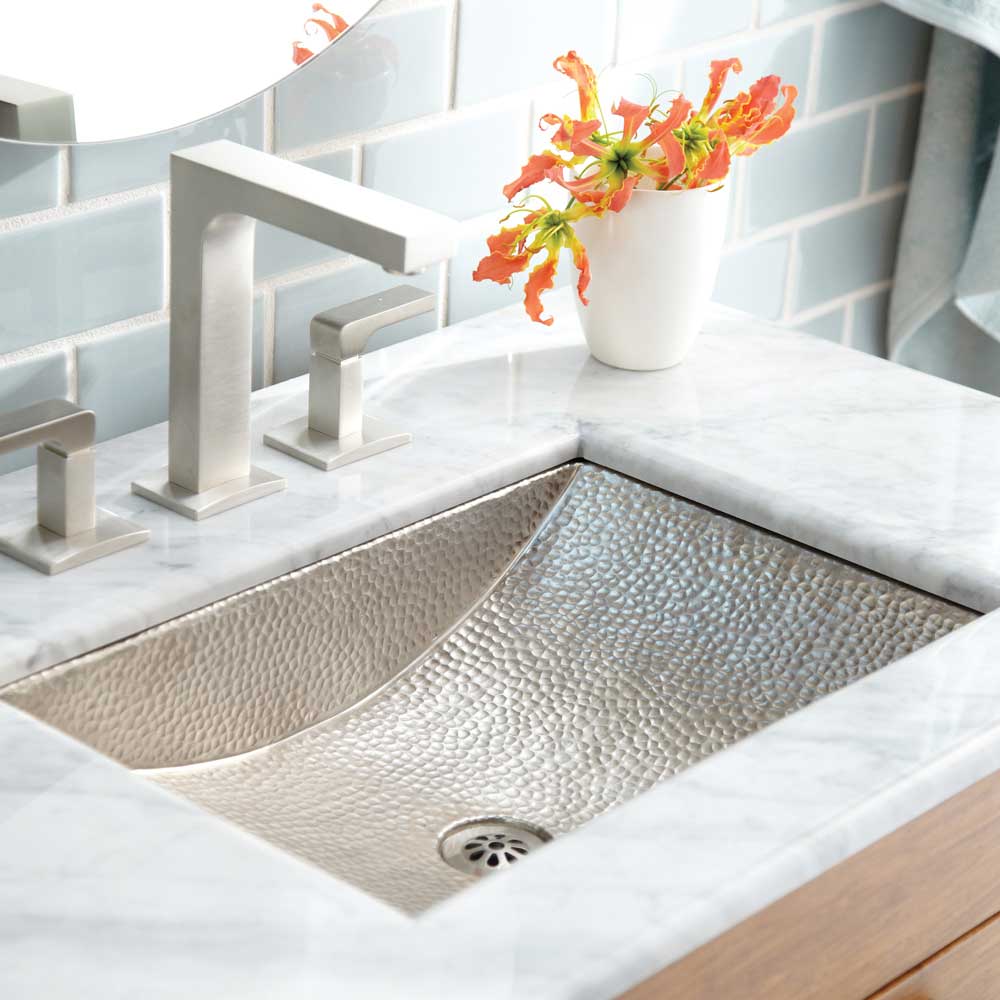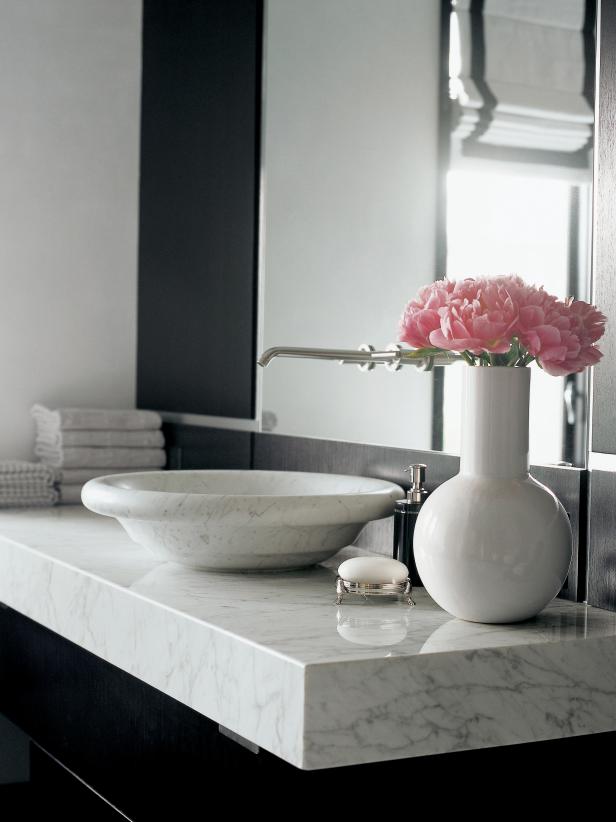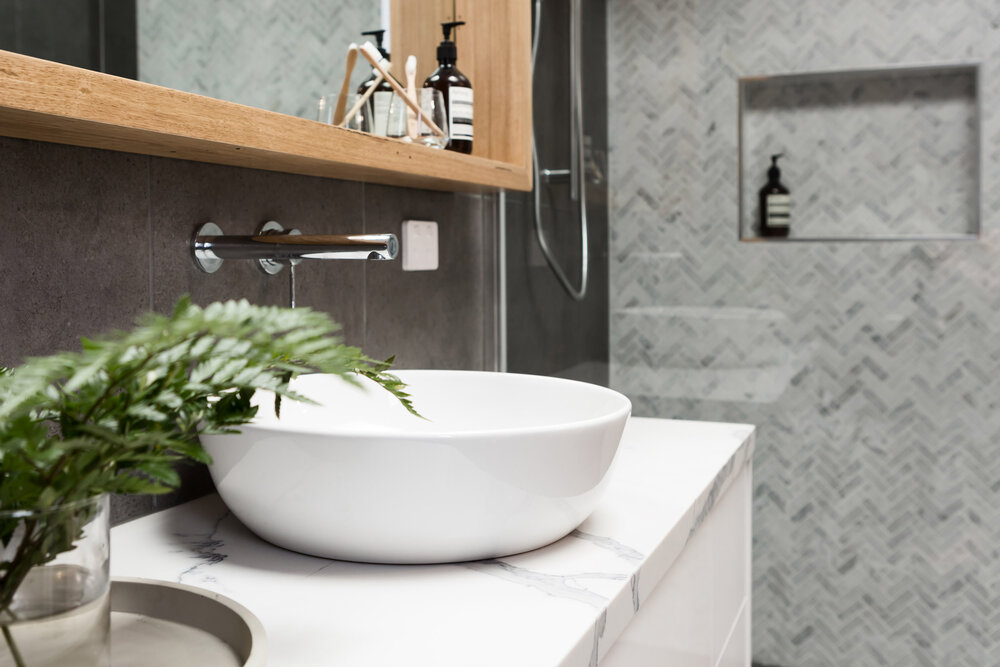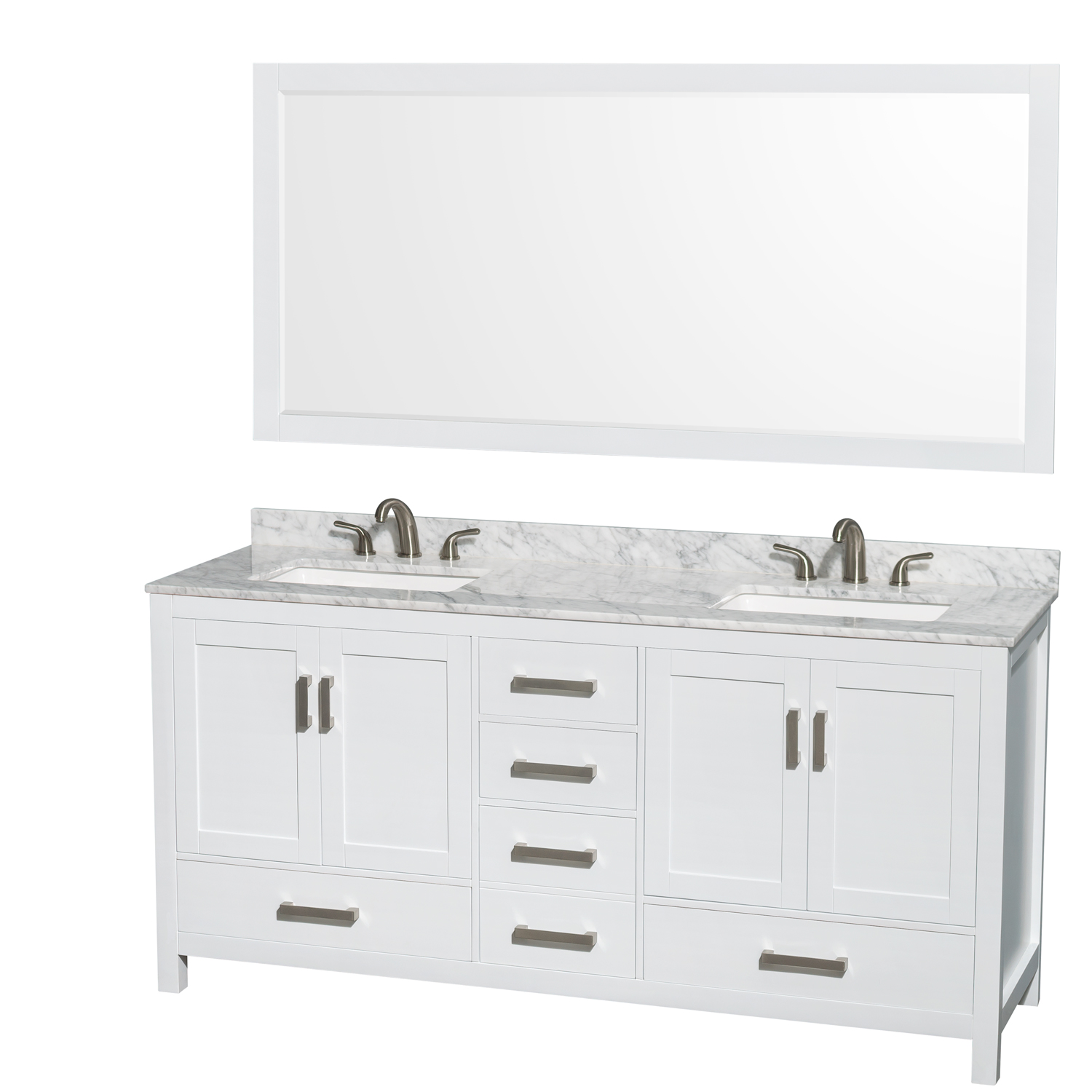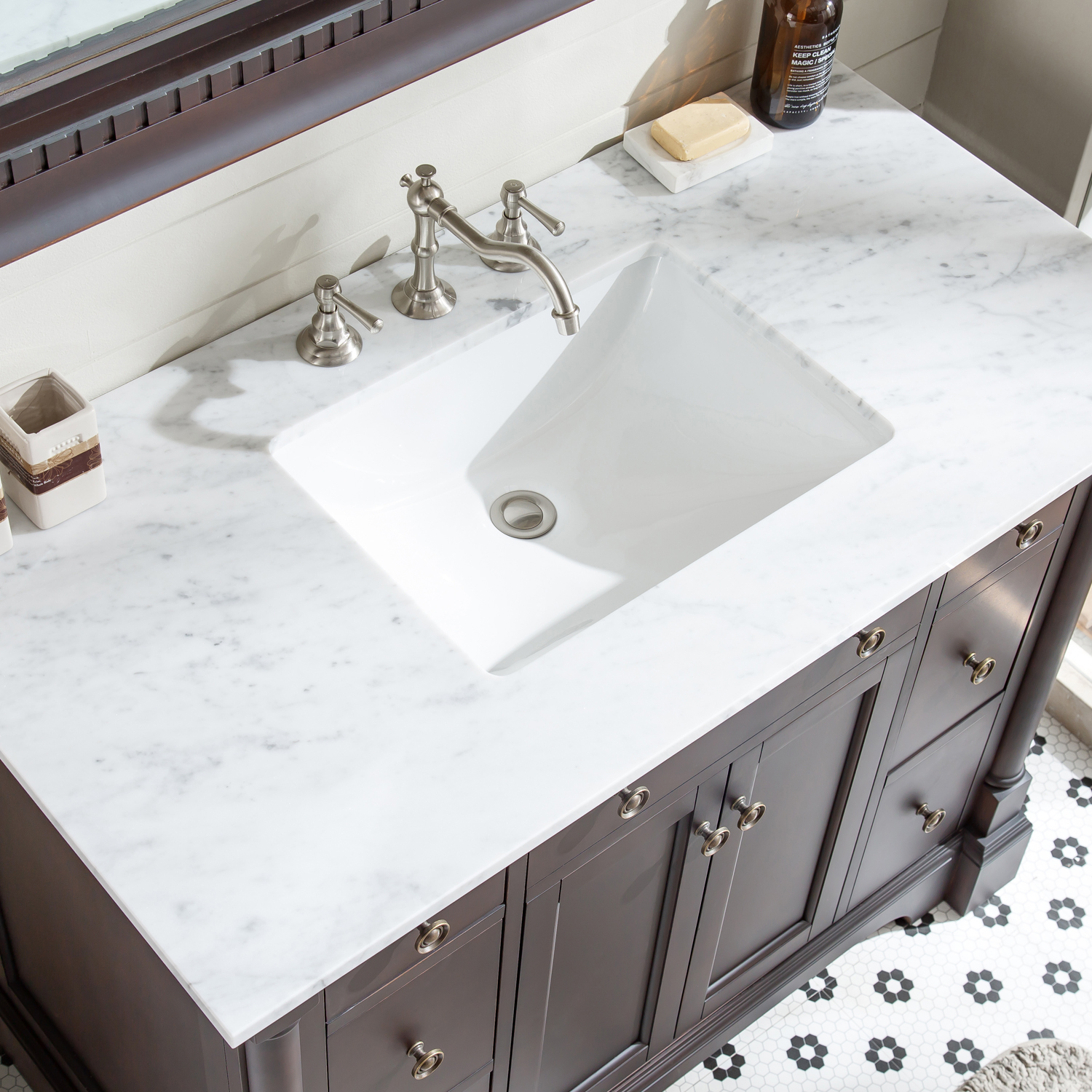Marble countertops are synonymous with luxury and elegance, making them a popular choice for bathroom sinks. This natural stone’s timeless appeal, combined with its unique veining and color variations, makes it a sought-after material for homeowners seeking to enhance their bathroom’s aesthetics. Let’s explore different aspects of bathroom sink marble countertops, including their benefits, types of marble, maintenance tips, design considerations, and the installation process. Additionally, we will discuss common mistakes to avoid and address frequently asked questions about marble countertops.
Benefits of Marble Countertops
Marble countertops offer several benefits that make them a preferred choice for bathroom sinks. One of the primary advantages is their aesthetic appeal. Marble’s natural beauty, with its unique veining patterns and color variations, adds a touch of elegance and sophistication to any bathroom. Each marble slab is distinct, ensuring that your countertop is one-of-a-kind.
Another significant benefit of marble is its durability. Although marble is a softer stone compared to granite, it is still quite robust and can withstand regular use in a bathroom setting. With proper care and maintenance, marble countertops can last for decades, making them a worthwhile investment.
Marble countertops also have a high heat resistance, which can be particularly useful in a bathroom where hot hair tools like straighteners and curling irons are frequently used. This heat resistance ensures that the countertop surface does not get damaged by high temperatures.
In terms of versatility, marble countertops are available in various colors and patterns, allowing homeowners to choose a design that complements their bathroom decor. From classic white and grey tones to more exotic colors like green and pink, marble offers a wide range of options to suit different design preferences.
Additionally, marble has a natural cooling property, making it a comfortable surface to touch. This can be particularly appealing in warmer climates or during the summer months. The cool surface of marble can add a refreshing element to the bathroom environment.
Lastly, marble countertops can increase the resale value of your home. The luxurious appeal of marble is attractive to potential buyers, and a well-maintained marble countertop can be a significant selling point. Investing in marble can thus provide both aesthetic and financial benefits.
Types of Marble for Bathroom Countertops
When selecting marble for bathroom sink countertops, it’s essential to understand the different types of marble available. Each type has its own unique characteristics and appearance, allowing you to choose the best option for your bathroom.
Carrara marble is one of the most popular types of marble used for bathroom countertops. Originating from Carrara, Italy, this marble is known for its white to greyish-blue color with soft veining. Carrara marble offers a classic and elegant look that suits a wide range of bathroom styles.
Calacatta marble is another sought-after option. Unlike Carrara, Calacatta marble features a white background with more pronounced, dramatic veining that ranges from gold to grey. This marble is rarer and more luxurious, making it a premium choice for those seeking a bold and striking countertop.
Statuario marble is also highly prized for its beauty and elegance. This marble has a bright white background with dramatic grey veining, similar to Calacatta but with a more uniform pattern. Statuario marble is often used in high-end bathroom designs for its sophisticated appearance.
Emperador marble, available in dark brown and light brown varieties, offers a different aesthetic compared to the traditional white marbles. The rich, warm tones of Emperador marble can add depth and a sense of luxury to bathroom countertops, making it a great choice for more opulent bathroom designs.
Thassos marble, named after the Greek island it comes from, is known for its pure white color and minimal veining. This type of marble can create a clean, modern look in a bathroom, providing a bright and airy feel to the space.
Lastly, green marble, such as the popular Verde Guatemala, offers a unique and exotic look. The deep green color with white veining can add a natural and earthy element to bathroom designs, making it an excellent choice for those looking to make a bold statement.
Maintenance Tips for Marble Countertops
Maintaining marble countertops requires regular care and attention to preserve their beauty and longevity. One of the key aspects of marble maintenance is sealing. Marble is a porous material, and sealing it helps protect against stains and moisture penetration. It’s recommended to seal marble countertops at least once a year or more frequently if they see heavy use.
Cleaning marble countertops involves using pH-neutral cleaners to avoid damaging the surface. Avoid using acidic or abrasive cleaners, as these can etch the marble and dull its finish. A mixture of warm water and mild dish soap is often sufficient for everyday cleaning. Wipe the countertop with a soft cloth and dry it thoroughly to prevent water spots.
To prevent scratches and etching, it’s essential to use cutting boards and trivets. Avoid placing sharp objects directly on the marble surface, and use coasters under glasses and bottles to prevent rings and stains. Additionally, be mindful of acidic substances like lemon juice, vinegar, and certain beauty products, as they can cause etching if left on the marble for too long.
Address spills immediately to prevent staining. Marble is susceptible to staining from substances like coffee, wine, and oil. If a spill occurs, blot it up quickly with a soft cloth rather than wiping, as wiping can spread the liquid and potentially cause more damage.
Regularly inspect the marble countertop for any signs of damage, such as chips, cracks, or dull spots. Addressing these issues promptly can prevent further damage and maintain the countertop’s appearance. For minor repairs, you can use a marble repair kit, but for more significant damage, it’s advisable to consult a professional.
Polishing marble countertops can help maintain their shine and smoothness. You can use a marble polish or a mixture of baking soda and water to buff the surface gently. However, avoid over-polishing, as this can wear down the sealant and expose the marble to potential damage.
Design Considerations for Marble Countertops
When designing a bathroom with marble countertops, several factors should be considered to ensure a cohesive and stylish look. The first consideration is the overall bathroom style. Marble countertops can complement various design aesthetics, from classic and traditional to modern and contemporary. Choosing the right type of marble and coordinating it with other bathroom elements is essential for achieving the desired look.
The color scheme of the bathroom plays a significant role in selecting the marble. For a harmonious design, choose a marble that complements the existing color palette. White and light grey marbles are versatile and can match almost any color scheme, while darker marbles like Emperador or green marble can add contrast and depth.
The size and layout of the bathroom also influence the choice of marble countertops. In smaller bathrooms, lighter-colored marble can create a sense of space and openness. In larger bathrooms, you have more flexibility to experiment with different colors and patterns. Consider the placement of the sink and how the marble will be integrated into the overall layout.
The edge profile of the marble countertop is another design element to consider. Different edge profiles, such as bevel, bullnose, ogee, and square, can change the look and feel of the countertop. A simple, straight edge can create a sleek and modern look, while a more ornate edge can add a touch of elegance and traditional charm.
Incorporating backsplash designs with marble countertops can enhance the overall aesthetic. A marble backsplash can create a seamless and cohesive look, while contrasting materials like glass or mosaic tiles can add visual interest. Consider the height and design of the backsplash to complement the marble countertop and other bathroom elements.
Finally, lighting is crucial in showcasing the beauty of marble countertops. Proper lighting can highlight the marble’s unique veining and color variations. Task lighting around the sink area, as well as ambient lighting throughout the bathroom, can enhance the overall design and make the marble countertop a focal point.
Installation Process of Marble Countertops
The installation of marble countertops requires careful planning and execution to ensure a perfect fit and finish. The first step in the installation process is measuring and templating. Accurate measurements are crucial to ensure the marble slab fits the designated space. A professional installer will create a template to guide the cutting and shaping of the marble.
Once the measurements and template are ready, the marble slab is cut and fabricated to the required dimensions. This process involves cutting the slab to size, creating the desired edge profile, and making any necessary cutouts for the sink and fixtures. Precision is essential during this stage to ensure a seamless fit.
Before installation, the existing countertop (if any) must be removed. The area should be thoroughly cleaned and prepped to ensure a smooth installation. This step may involve reinforcing the cabinets or vanity to support the weight of the marble slab.
The marble slab is then carefully positioned and secured in place. Adhesive or silicone is used to bond the marble to the substrate, ensuring a stable and secure fit. It’s important to check that the countertop is level and properly aligned during this stage to prevent any issues with the sink or fixtures.
Once the marble slab is in place, the seams are filled and polished to create a seamless appearance. The installer will use color-matched epoxy to fill any gaps between the slabs and then polish the seams to blend them with the rest of the countertop. This step is crucial for achieving a smooth and cohesive look.
The final step is sealing the marble countertop. Sealing protects the marble from stains and moisture, ensuring its durability and longevity. The installer will apply a high-quality sealant and allow it to cure properly before the countertop is ready for use. Regular resealing is recommended to maintain the marble’s protection over time.
Common Mistakes to Avoid
When working with marble countertops, several common mistakes can impact the final result and longevity of the surface. One of the most frequent mistakes is improper sealing. Failing to seal the marble adequately or not resealing it regularly can lead to staining and moisture damage. Ensure the marble is sealed properly during installation and maintained regularly.
Using harsh or acidic cleaners on marble countertops is another common mistake. These cleaners can etch the marble and damage its finish. Always use pH-neutral cleaners and avoid abrasive scrubbing pads to protect the marble surface.
Neglecting to address spills promptly can result in stubborn stains. Marble is porous and can absorb liquids, leading to discoloration. Blot spills immediately and clean the area with a mild detergent to prevent staining.
Choosing the wrong type of marble for a bathroom environment can also be problematic. Some marbles are more prone to staining and etching than others. Consult with a professional to select a marble that is suitable for bathroom use and has the necessary durability.
Improper installation can lead to issues such as uneven surfaces, poor seam placement, and inadequate support. It’s crucial to hire experienced professionals for the installation process to ensure the marble countertop is installed correctly and securely.
Lastly, failing to consider the weight of marble countertops can cause structural problems. Marble is heavy, and the vanity or cabinets must be reinforced to support its weight. Ensure that the base structure is strong enough to bear the load of the marble slab to avoid sagging or damage.
How do I choose the right type of marble for my bathroom sink countertop?
Choosing the right type of marble involves considering both aesthetics and practicality. Look for a marble that complements your bathroom’s design and color scheme. Consider the marble’s durability and resistance to staining and etching. Carrara, Calacatta, and Statuario are popular choices for their beauty and durability. Consulting with a professional can help you select a marble that meets your needs and preferences.
How often should I seal my marble countertop?
Marble countertops should be sealed at least once a year, but the frequency may vary depending on usage and the type of sealant used. High-traffic areas may require more frequent sealing, while less-used surfaces can go longer between sealings. Regularly check the countertop for signs of water absorption or staining, which indicates that resealing is needed.
Can I use regular household cleaners on marble countertops?
No, regular household cleaners, especially those that are acidic or abrasive, can damage marble countertops. Use pH-neutral cleaners specifically designed for marble surfaces. A mixture of warm water and mild dish soap can also be used for everyday cleaning. Avoid using vinegar, lemon juice, or any harsh chemicals on marble.
What should I do if my marble countertop gets stained or scratched?
If your marble countertop gets stained, address the stain promptly by blotting the area with a soft cloth and cleaning it with a mild detergent. For stubborn stains, a poultice can be used to draw out the stain. If the marble is scratched, a professional can polish the surface to remove minor scratches. Deep scratches or etching may require professional restoration.
How can I maintain the shine and beauty of my marble countertop?
To maintain the shine and beauty of your marble countertop, clean it regularly with pH-neutral cleaners and avoid harsh chemicals. Use cutting boards and trivets to prevent scratches and heat damage. Reseal the countertop as needed to protect against stains and moisture. Regularly polish the marble with a marble polish or a mixture of baking soda and water to keep it looking smooth and shiny.
Marble Countertops
Bathroom Vanity Countertops: Which Material is Right For You
Sterling Silver cultured marble with a large square integrated
Sheffield 72″ Double Bathroom Vanity, Square Sinks (3 Hole
Eviva Preston 49 in. Aged Chocolate Bathroom Vanity with White Carrara Marble Countertop and Undermount Sink
Related articles:
